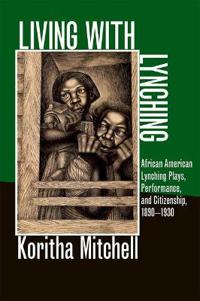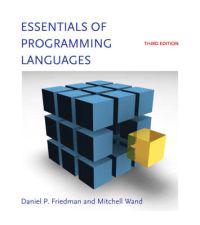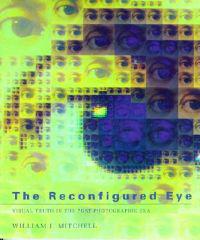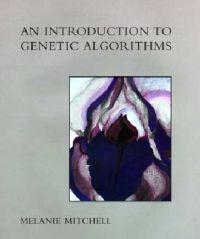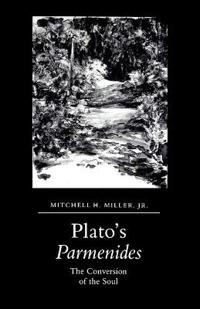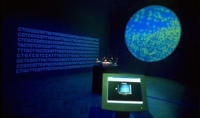Head Over Heels (Häftad)
avRain Mitchell
ISBN: 9780241953679 - UTGIVEN: 201212Five unforgettable women. One beloved yoga studio. A million tales to tell. Yoga teacher Lee is facing a tough decision. Struggling to make ends meet at her treasured studio she's given a helping hand in the form of an invitation to participate in the biggest yoga event of the year ...but to do so m[...]
Living with Lynching (Inbunden)
avKoritha Mitchell
ISBN: 9780252036491 - UTGIVEN: 201111Living with Lynching: African American Lynching Plays, Performance, and Citizenship, 1890-1930 demonstrates that popular lynching plays were mechanisms through which African American communities survived actual and photographic mob violence. Often available in periodicals, lynching plays were read a[...]
Reinventing the Automobile (Inbunden)
avWilliam J. Mitchell, Chris Borroni-bird, Lawrence D. Burns
ISBN: 9780262013826 - UTGIVEN: 2010-03-31How to leave behind our unwieldy, gas-guzzling, carbon dioxide-emitting vehicles for cars that are green, smart, connected, and fun.[...]
Neuroscience (Inbunden)
avMitchell Glickstein
ISBN: 9780262026802 - UTGIVEN: 2014-01This introduction to neuroscience is unique in its emphasis on how we know what we know about the structure and function of the nervous system. What are the observations and experiments that have taught us about the brain and spinal cord? The book traces our current neuroscientific knowledge to many[...]
Nine Elements of a Sustainable Campus, The (Inbunden)
avMitchell Thomashow
ISBN: 9780262027113 - UTGIVEN: 2014-04-29Essentials of Programming Languages (Inbunden)
avDaniel P. Friedman, Mitchell Wand
ISBN: 9780262062794 - UTGIVEN: 200805This book provides students with a deep, working understanding of the essential concepts of programming languages. Most of these essentials relate to the semantics, or meaning, of program elements, and the text uses interpreters (short programs that directly analyze an abstract representation of the[...]
Intentional Oil Pollution at Sea: Environmental Policy and Treaty Compliance (Inbunden)
avRonald B. Mitchell
ISBN: 9780262133036 - UTGIVEN: 1994-12-15ME++: The Cyborg Self and the Networked City (Övrig)
avWilliam J. Mitchell
ISBN: 9780262134347 - UTGIVEN: 2003-11-04With Me++ the author of City of Bits and e-topia completes an informal trilogy examining the ramifications of information technology in everyday life. William Mitchell describes the transformation of wireless technology in the hundred years since Marconi--the scaling up of networks and the scaling d[...]
Imagining MIT: Designing a Campus for the Twenty-first Century (Övrig)
avW. J. Mitchell
ISBN: 9780262134798 - UTGIVEN: 2007-03-09In the 1990s, MIT began a billion-dollar building program that transformed its outdated, run-down campus into an architectural showplace. Funded by the high-tech boom of the 1990s and and driven by a pent-up demand for new space, MIT's ambitious rebuilding produced five major works of architecture: [...]
Analogy-Making as Perception: A Computer Model (Övrig)
avMelanie Mitchell
ISBN: 9780262515443 - UTGIVEN: 1993-05-14The psychologist William James observed that "a native talent for perceiving analogies is...the leading fact in genius of every order." The centrality and the ubiquity of analogy in creative thought have been noted again and again by scientists, artists, and writers, and understanding and modeling a[...]
Imagining MIT: Designing a Campus for the Twenty-First Century (Övrig)
avWilliam J. Mitchell
ISBN: 9780262516112 - UTGIVEN: 2011-03-11In the 1990s, MIT began a billion-dollar building program that transformed its outdated, run-down campus into an architectural showplace. Funded by the high-tech boom of the 1990s and and driven by a pent-up demand for new space, MIT's ambitious rebuilding produced five major works of architecture: [...]
Logic of Architecture, The: Design, Computation and Cognition (Övrig)
avWilliam J. Mitchell
ISBN: 9780262631167 - UTGIVEN: 1990-06-20The Logic of Architecture is the first comprehensive, systematic, and modern treatment of the logical foundations of design thinking. It provides a detailed discussion of languages of architectural form, their specification by means of formal grammars, their interpretation, and their role in structu[...]
Poetics of Gardens, The (Övrig)
avCharles W. Moore, William J. Mitchell, William Turnbull
ISBN: 9780262631532 - UTGIVEN: 1993-10-01There is a universality about the creation of gardens across time and in diverse cultures that has inspired this entirely different garden book: a playful and affectionate typology of gardens; a pattern book in which a score of landscapes and gardens are drawn, described, and analyzed not just as a [...]
The Reconfigured Eye (Häftad)
avWilliam J. Mitchell
ISBN: 9780262631600 - UTGIVEN: 199409"An intelligent and readable approach to the digitization of images...A useful overview of a critical subject."-- New York Times Book ReviewEnhanced? Or faked? Today the very idea of photographic veracity is being radically challenged by the emerging technology of digital image manipulation and synt[...]
An Introduction to Genetic Algorithms (Häftad)
avMelanie Mitchell
ISBN: 9780262631853 - UTGIVEN: 199804Genetic algorithms have been used in science and engineering as adaptive algorithms for solving practical problems and as computational models of natural evolutionary systems. This brief, accessible introduction describes some of the most interesting research in the field and also enables readers to[...]
E-topia (Pocket)
avMitchell, William J
ISBN: 9780262632058 - UTGIVEN: 2000-10-11The global digital network is a whole new urban infrastructure--one that will change the forms of our cities as dramatically as railroads, highways, electric power grids, and telephone networks did in the past. In this lucid, invigorating book, William Mitchell examines this new infrastructure and i[...]
ME++ (Häftad)
avWilliam J. Mitchell
ISBN: 9780262633130 - UTGIVEN: 2004-10With Me++ the author of City of Bits and e-topia completes an informal trilogy examining the ramifications of information technology in everyday life. William Mitchell describes the transformation of wireless technology in the hundred years since Marconi--the scaling up of networks and the scaling d[...]
Placing Words: Symbols, Space, and the City (Övrig)
avWilliam J. Mitchell
ISBN: 9780262633222 - UTGIVEN: 2005-10-21The meaning of a message, says William Mitchell, depends on the context of its reception. "Shouting 'fire' in a crowded theater produces a dramatically different effect from barking the same word to a squad of soldiers with guns," he observes. In Placing Words, Mitchell looks at the ways in which ur[...]
World's Greatest Architect: Making, Meaning, and Network Culture (Övrig)
avWilliam J. Mitchell
ISBN: 9780262633642 - UTGIVEN: 2008-09-02Artifacts (including works of architecture) play dual roles; they simultaneously perform functions and carry meaning. Columns support roofs, but while the sturdy Tuscan and Doric types traditionally signify masculinity, the slim and elegant Ionic and Corinthian kinds read as feminine. Words are ofte[...]
Bringing the Biosphere Home (Pocket)
avMitchell Thomashow
ISBN: 9780262700993 - UTGIVEN: 2003-04This book shows how to make global environmental problems more tangible, so that they become an integral part of everyday awareness. At its core is a simple assumption: that the best way to learn to perceive the biosphere is to pay close attention to our immediate surroundings. Through local natural[...]
Metacreation: Art and Artificial Life (Övrig)
avMitchell Whitelaw
ISBN: 9780262731768 - UTGIVEN: 2006-03-10Artificial life, or a-life, is an interdisciplinary science focused on artificial systems that mimic the properties of living systems. In the 1990s, new media artists began appropriating and adapting the techniques of a-life science to create a-life art; Mitchell Whitelaw's Metacreation is the first[...]
Marketing (Övrig)
avBradley Barnes, Michael R. Solomon, Greg W. Marshall, Elnora W. Stuart, Vincent-wayne Mitchell, Roy Langer
ISBN: 9780273727781 - UTGIVEN: 2009-07-30Mitchell's Introduction To Building (Pocket)
avRoger Greeno, Derek Osbourn
ISBN: 9780273738046 - UTGIVEN: 2012-11-29Bioart and the Vitality of Media (Häftad)
avRobert E. Mitchell
ISBN: 9780295990088 - UTGIVEN: 201007Bioart, art that uses either living materials (such as bacteria or transgenic organisms) or more traditional materials to comment on, or even transform, biotechnological practice, now receives enormous media attention. Yet despite this attention, bioart is frequently misunderstood. "Bioart and the V[...]


